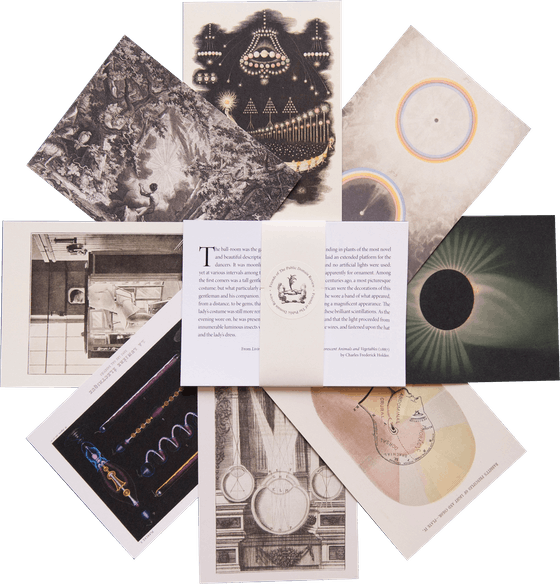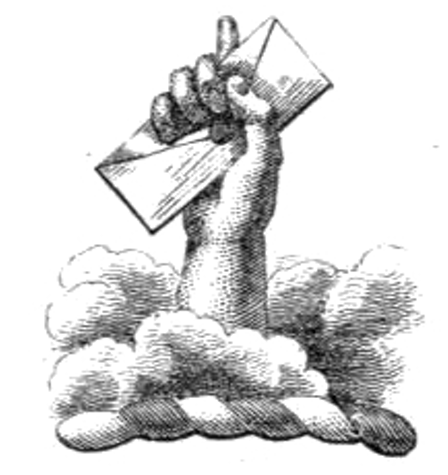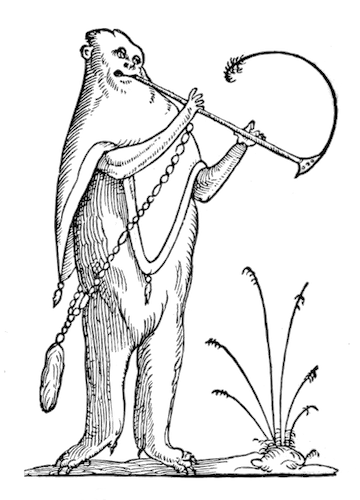
Art in Art Cabinets of Curiosity and the Rise of the Gallery Painting
In the 17th century, emanating from Antwerp, a new genre of artwork came on the scene: paintings of paintings, works populated by a lush array of meta-images. From its origins in picturing private curiosity cabinets to its later use in documenting increasingly public collections, Thea Applebaum Licht charts the course of this alluring aesthetic tradition.
November 25, 2025
Frans Francken the Younger, The Cabinet of a Collector, 1617 — Source.
There is something ineffably intimate about the painting Cabinet of a Collector (1617). A sense of closeness, as though you have been drawn, alone, into this alcove crammed with beautiful things. The wall, on which a dizzying array of images and objects are hung, is yours to reach out and touch. Desiccated creatures from far-off seas are pinned over loose sketches and between paintings of lush, deep-set landscapes. In shadow boxes, small animal forms catch light alongside piles of coins, classical profiles glinting. In a feat of forced perspective, gleaming shells and shark’s teeth jut off the table toward you. They look heavy and cool to the touch. The spread is a daze, a visual feast. But to its right, through an open doorway, there’s something stranger going on. . .
Another collection, this one lying in disarray. A globe, a lute, a broken statue; books and a painter’s palette. Several swaggering figures stand over the mess, bats raised up above their impassive, long-eared donkey heads.
Frans Francken the Younger, The Cabinet of a Collector (detail), 1617 — Source.
Put aside our ass-headed antagonists for just a moment. The space that the artist, Flemish painter Frans Francken the Younger (1581–1642), has welcomed us into is a collector’s cabinet, an accretion that shares features of the gallery and the reference library, and precedes the modern sense of both. Cabinets (in German, Wunderkammern or Kunstkammern) reflect a private collector’s sensibility very much of its time, that is, of the sixteenth and seventeenth centuries. Their assemblage of precious natural and man-made objects was meant to be beautiful, rarified, and intellectually stimulating all at once.
Both quasi-encyclopedic and essentially aesthetic, early collector’s cabinets maintained no real line between the natural and the unnatural, the secular and the religious.1 Insofar as an organizing principle existed, it was to maximize impact by playing dissimilar objects off each other: the desired effect, as historian of science Lorraine Daston writes, “was one of cornucopia-like bounty and startling variety, a visual tribute to the exuberant creativity of nature and art”.2 The natural philosophy of the day was capacious enough to include everything that would later crystallize into distinct fields: the arts, the sciences, theology. The Kunstkammer’s contents were for study broadly construed, a stage for contemplation in the most general sense of the word. The space was also a way of showcasing the collecting connoisseur’s taste, wealth, and discernment. Owning naturalia, scientific instruments, and fine art, writes scholar Marlise Rijks, signaled possession of “the knowledge these objects stood for”.3 The earliest known image of a cabinet — a 1599 woodcut illustrating the natural history collection of the Neapolitan apothecary Ferrante Imperato — shows Italian connoisseurs pointing out specimens gathered from across the world.
Engraving of a collector’s cabinet from Ferrante Imperato’s Dell’Historia Naturale (1599) — Source.
As the seventeenth century progressed, meticulously detailed images of sumptuous Kunstkammern became a genre in their own right. One of the finest examples, Italian painter Domenico Remps’ (1620–22) Cabinet of Curiosities, dates to the 1690s and offers a glimpse of the spectacle served up by a tastefully cluttered collection. A literal cabinet, executed in stunning trompe-l’oeil, teems with crimson coral and feathers, tiny paintings and intricate ivory sculptures. Polished glass jockeys for attention with a gleaming hercules beetle and a stained, empty-eyed human skull.
Domenico Remps, Cabinet of Curiosities, ca. 1690s — Source.
Many cabinet paintings reflect displays that never existed as such. Artists are thought to have selected examples from their own collections, as may be the case for some of the Francken paintings, or from the broader holdings of a commissioning patron. They pieced together these references into opulent still-lifes. The composition of their paintings would have been acts of connoisseurship, a demonstration of taste and knowledge, a moment of collection itself.
The virtues embodied by the Kunstkammer and its representations — erudition, taste, wealth, connections — help to explain the presence of our donkey-headed philistines. The metaphor is simple enough. Within sight of the collection, we see metonymies of the liberal arts crushed under the foot and cudgel of that enduring symbol of ignorance, the ass. As the Protestant Reformation’s debates over materiality and idolatry raged across the sixteenth century, not only religious imagery but, in some cases, visual art in general came under fire. At the same time, religiously inspired apprehension about material wealth was directed against both luxurious collections (a fad in the Low Countries and beyond) and images that seemed to promote opulence. With their equine iconoclasts, the Franckens were taking a strong stance as “defenders of the image”, making a visual case that the reformers’ rejection of art threatened the liberal arts more generally.
The Francken workshop would repeat the “anes iconoclastes” trope across several paintings — in A Collector’s Cabinet (1619), for instance, and in a seventeenth-century image of a malcontent donkey preparing to bludgeon the learned — always in association with the cabinet. For the Franckens, the issue was personal and painfully current. In addition to pioneering the cabinet painting genre, the Francken family played an active role in the Antwerp Counter-Reformation. They left a written record of their discontent during the “Silent Iconoclasm” of the late sixteenth century and sequestered religious images and objects at home for safekeeping.4
Frans Francken the Younger, A Collector’s Cabinet, 1619 — Source.
Frans Francken the Younger, A Collector’s Cabinet (detail), 1619 — Source.
Painting of an iconoclastic donkey by Frans Francken the Younger, ca. 17th century — Source.
As the seventeenth century progressed, collector’s cabinets became increasingly specialized. More and more, rooms were filled with art alone, without an accompaniment of exotic naturalia. Rijks describes this as an ambiguous development for the visual arts: “that outcome was both a victory, in that the collecting of art was considered valuable for its own sake, and a defeat, in that art played a decreasing importance as a transmitter of knowledge.”5 In a kind of escalating aesthetic spiral, these early galleries attracted artistic attention in their own right: paintings of paintings, art of art.6 Antwerp had become the epicenter of an expanding array of lush meta-images.7
As in representations of curiosity cabinets, gallery images were not always faithful depictions of actual collections. Rather, the artworks (real or sometimes entirely contrived) were brought together for the first time on the canvas, a curatorial act in itself, often in the service of allegory. In Peter Paul Rubens’ The Sense of Sight (1617), for example, the figures of Venus and Cupid are juxtaposed with a jumble of art and scientific implements: a wide-ranging reflection on the meaning of sight itself. Here we find a version of Raphael’s The Ecstasy of Saint Cecilia (ca. 1514–17) and Rubens’ own The Tiger Hunt (ca. 1615–16) amid neoclassical busts, a monkey contemplating a seascape, and other curio clutter.
Peter Paul Rubens, The Sense of Sight, 1617 — Source.
 Scroll through the whole page to download all images before printing.
Scroll through the whole page to download all images before printing.Peter Paul Rubens, The Sense of Sight (detail), 1617, showing Rubens’ own painting, The Tiger Hunt — Source.
 Scroll through the whole page to download all images before printing.
Scroll through the whole page to download all images before printing.Peter Paul Rubens, The Tiger Hunt, ca. 1615–16 — Source.
In his mid-eighteenth century painting The Artist’s Studio, Austrian painter Johann Georg Platzer (1704–61) depicts himself at the center of a workshop cluttered with images that allude to his well-known works — such as The Pleasures of the Seasons (ca. 1730) and Spring (ca. pre-1761) — and motifs from the history of art, such as a painting of Aesop’s “The Satyr and the Peasant”. Assistants, students, a nude model, and a visiting collector disappear in a busy forest of images. Taken together, the most prominent of the paintings form an allegory of the five senses.
Johann Georg Platzer, The Artist’s Studio, ca. 1740s–50s — Source.
Between about 1754 and 1757, the Italian painter and architect Giovanni Paolo Panini (1691–1765) executed a series of four nearly-identical, and purely fantastical, galleries of classical ruins. While the sculptures are real (including, for example, the famous Laocoön Group), the paintings and the gallery are fictions, offering a travel guide to the must-see Roman ruins: the Pantheon, the Colosseum, the Piazza Navona. Snapshots from the Grand Tour, in a grand memory palace. Panini’s patron, a French diplomat, is pictured holding a guidebook.
Giovanni Paolo Panini, Ancient Rome, 1757 — Source.
On the whole, however, gallery images were rather rooted in reality. They served as visual inventories, painted indices of ownership and display. The Flemish painter Willem van Haecht (1593–1637) made a name for himself painting galleries, including, in 1621, the Interior of the Salon of the Archduchess Isabella of Austria. He captures the duchess sitting amid her collection in searing daylight, each frame illuminated in hyperreal detail. Her entourage confer over a table of astronomical instruments — in contrast to later gallery paintings, where science will be fully hived off from art — and point out painted details. Two tropical birds are arranged nearby, like one more work of art, while a tiny, chained monkey confronts a lap dog. Van Haecht’s 1628 recreation of the merchant Cornelis van der Geest’s collection is on another order of magnitude: over two dozen characters crowd in, dwarfed by an array of paintings nearly three storeys high.
Willem van Haecht, Interior of the Salon of the Archduchess Isabella of Austria, 1621 — Source.
Willem van Haecht, The Gallery of Cornelis van der Geest, 1628 — Source.
 Scroll through the whole page to download all images before printing.
Scroll through the whole page to download all images before printing.Willem van Haecht, The Gallery of Cornelis van der Geest (detail), 1628, depicting a portrait of Paracelsus — Source.
 Scroll through the whole page to download all images before printing.
Scroll through the whole page to download all images before printing.The Louvre copy of a lost portrait of Paracelsus by Quentin Matsys, ca. 17th century — Source.
In his decade-long effort to catalogue the collection of his patron Archduke Leopold Wilhelm, the Flemish artist David Teniers the Younger (1610–90) produced a series of gallery paintings almost interchangeable but for their selection of artworks.8 Each is staged in identical — or nearly identical — rooms. When the walls run out of space, Teniers props up frames on the floor, leans them against each other, and suspends them from the ceiling. Each image is captured in precise, documentary detail. Wilhelm, Teniers’ patron, appears in every iteration, picking his way through the forest of paintings with a long, thin cane — his entourage always close by.9
David Teniers the Younger, Archduke Leopold Wilhelm van Habsburg in His Art Gallery in Brussels, ca. 1647–51 — Source.
The German artist Johan Zoffany’s (1733–1810) painting of the Tribuna of the Uffizi, from the 1770s, takes on perhaps the most famous gallery of the Florentine museum: an octagonal room whose display has been said to reflect the sensibilities of the Wunderkammer.10 No clear message emerges from Zoffany’s congeries of art, some of which he pulled from other galleries in the sprawling complex. If it symbolizes anything, the painting may simply be read as an allusion to the richness of the Uffizi. With art cluttering the room’s red walls and heaped onto multicolored rugs — teeming with the powdered coifs and shiny breeches of visiting British aficionados — the effect is that of a dragon’s horde.
Johan Zoffany, Tribuna of the Uffizi, 1772–77 — Source.
Increasingly, these paintings recorded the scene of specific, dated exhibitions and named galleries. Later generations of artists, like the Italian engraver Pietro Antonio Martini (1738–97) and the French painter François Joseph Heim (1787–1865), made careers recording (in faithful detail) the exhibits of great museums like the Louvre. Over a century on, the painter Enrico Meneghelli (1853–1912) would capture the interiors of American galleries like the Boston Athenaeum: somber, dimly lit spaces often empty of any spectators. Some works are tour-de-forces of artistic talent. Oil paint captured not just the displays but the soaring arches and columns of gallery spaces. Meanwhile etchings dense with cross-hatching and stippling conjured up easily reproducible copies of well-traveled exhibits. Taking creative liberties — adding or subtracting works at the engraver’s discretion — would have defeated the purpose. The effort is almost journalistic, a report for an absent audience.
Pietro Antonio Martini after Johann Heinrich Ramberg, Exposition au Salon du Louvre en 1787, 1787 — Source.
The presence of an engrossed audience is almost ubiquitous across the diverse “paintings of paintings” in Europe and beyond. These images traced interesting times. Gallery paintings witnessed the birth of the art museum and the long, slow democratization of art. At one point, the term “cabinet” carried a powerful connotation of privacy and authority. If beautiful images or objects were stored in this masculine heart of the home, vanishingly few people would ever lay eyes on them. Outside of the head of household — the collector himself — only those personally invited would have been admitted to marvel and meditate. But over time, collections and their audiences radically expanded. No longer were private homes and religious buildings the only repositories for fine art. Instead, museums and salons played host to an increasingly sundry crowd.
In later examples of the gallery painting, the flocks of art-lovers gesturing up at the walls swell almost comically, the artworks seeming to dwindle in importance. The handful of visitors featured in earlier “paintings of paintings” — perhaps just the collector, his family, a few esteemed guests, in some cases the commissioned artist himself — are displaced by distended, disorderly masses. Dozens, if not hundreds of eager visitors fill the paintings of Martini and Heim. In 1824, Heim captured Charles X Distributing Awards to Artists at a Louvre salon. The teeming crowd, well over a hundred well-heeled figures in luminescent white and black, easily outnumber the paintings that hulk behind them in shadow — and few people look upward to take in the display. In his circa 1790s work The Art Gallery of Josephus Augustinus Brentano, Dutch painter Adriaan de Lelie (1755–1820) captures guests at an art collector’s opulent Amsterdam home. A dim shaft of light picks out Brentano and his company’s expressions of focus as they pore over his latest purchases: it largely misses the paintings themselves, whose details are left in hazy smudges.
François Joseph Heim, Charles X Distributing Awards to Artists Exhibiting at the Salon of 1824 at the Louvre, 1827 — Source.
Adriaan de Lelie, The Art Gallery of Josephus Augustinus Brentano, ca. 1790–99 — Source.
The pairing of illegible images and an absorbed (or distracted) crowd recalls an argument by the philosopher and cultural critic Walter Benjamin (1892–1940). In his 1935 essay “The Work of Art in the Age of Mechanical Reproduction”, Benjamin writes that we experience art between the two poles of “distraction and concentration”.11 He appeals to the old enlightened ideal of art viewership: something private, personal, and introspective. “A man who concentrates before a work of art is absorbed by it”, he writes.12 “In contrast, the distracted mass absorbs the work of art”.13 He finds, in film and photography — in art’s mass consumption through mechanical reproduction — the peril of distraction, of passive diversion, of ready-made opinion.
Benjamin speaks of the “aura” of the original: its authenticity, its uniqueness, its historical “presence in time and space”.14 Copies can bring us closer, bring more people closer, to an artwork. But its aura cannot be faithfully reproduced. The aura, for Benjamin, is rooted in an artwork’s cult value. It is a kind of value that recalls the ritual significance of the cult object: the religious import of the cloistered icon, the gravity of the unapproachable, the inaccessible — and even, the private curiosity cabinet, shuttered away in a domestic home. With time, and with secularization, the artwork becomes recognizable as such: it ceases to be “first and foremost, an instrument of magic” and accrues exhibition value instead, the artwork as spectacle.15
“Paintings of paintings” sit somewhere in the middle of these binaries, allowing us to detect the faultlines of Benjamin’s crisis far earlier in history. Since there has been art, there has been a will and a way to reproduce it. Paintings of paintings, drawings of drawings, intaglio prints of intaglio prints. Depicting scenes of exhibition and distracted consumption, gallery paintings nevertheless have a cult value of their own. While they cannot reproduce the experience of standing before the works that they copy, one can experience a gallery painting as an artwork in its own right. They come from an age of manual reproduction, yet somehow anticipate the philosophical questions that the emergence of film and photography will spawn.
Today, in a world of limitless digital duplicates, museums are still filled: and only the truly asinine iconoclast would oppose the accessibility of art on the internet. In the painted cabinet and painted gallery, and in the world of online art, questions of authenticity and aura linger (to say nothing of distraction and passivity). But to the challenges of crowds and copies, to the immanent concern of the artificial, rises the redemptive quality of curation, selection, and arrangement. Though stocked with copies and reproductions, cabinet paintings are works in their own right, with an aura all of their own. And in digital curation today, in the intimacy of online spaces, perhaps there are cabinets of curiosity still to be found.
Thea Applebaum Licht is a writer and researcher based in Boston, Massachusetts. She studies the history of science as a PhD student in MIT’s HASTS program, and holds a bachelor’s degree in History and Germanic Studies from the University of Chicago. She is assistant editor at The Public Domain Review.
Enjoyed this piece? We need your help to keep publishing.
The PDR is a non-profit project kept alive by reader donations – no ads, no paywalls, just the generosity of our community. It’s a really exciting model, but we need your help to keep it thriving. Visit our support page to become a Friend and receive our themed postcard packs. Or give a one-off donation. Already a supporter? A huge thank you for making all this possible.






















